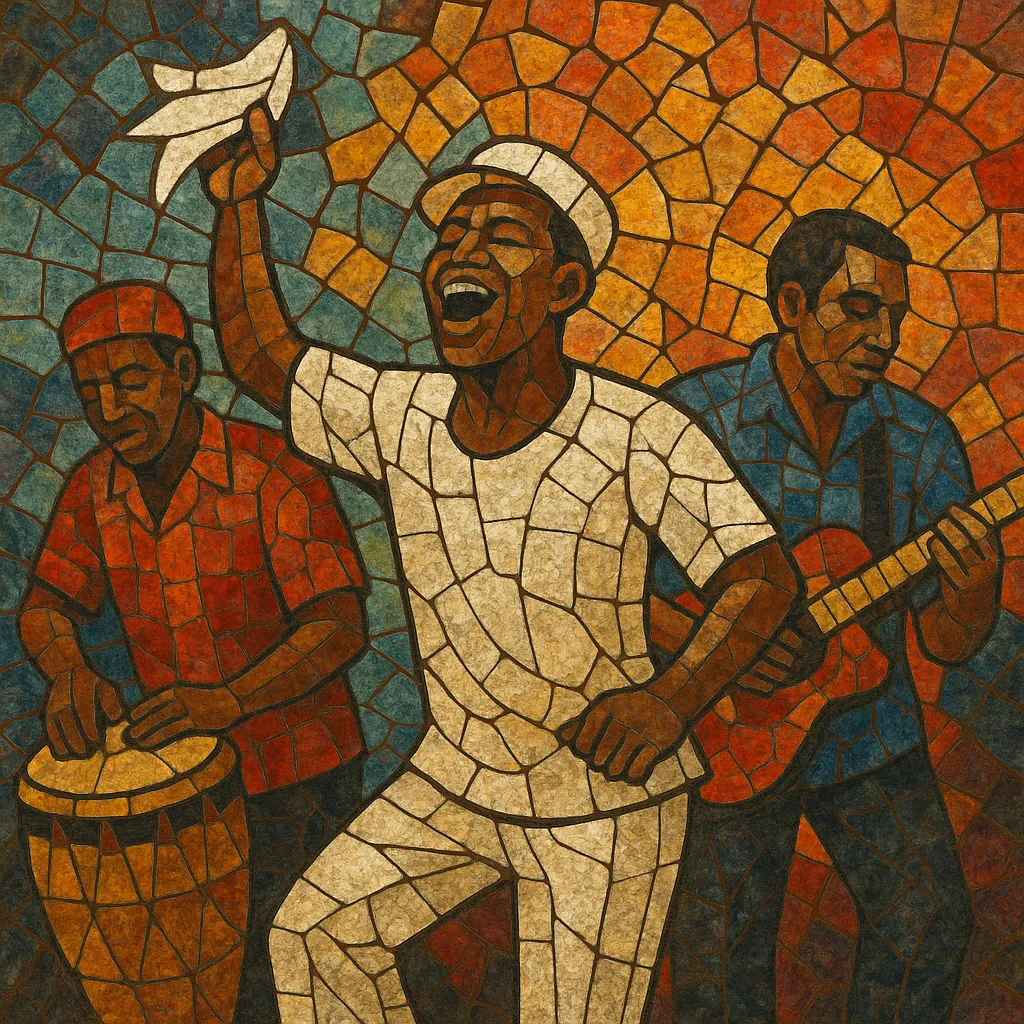Zoblazo is a high-energy dance music from Côte d'Ivoire popularized by the singer-producer Meiway in the early 1990s. It blends coastal Ivorian rhythms with the guitar finesse of Ghanaian highlife, the fluid drive of Congolese soukous, and the polished sheen of francophone Caribbean zouk.
Characterized by bright major-key melodies, call-and-response vocals, propulsive 4/4 grooves around 110–130 BPM, and brisk percussion breaks, zoblazo invites collective participation—famously with dancers waving white handkerchiefs in coordinated moves. Horn stabs, bubbling bass lines, soukous-style guitar figures, and modern keyboards/samplers round out its festive, extroverted sound.
Zoblazo emerged in Abidjan as a modern, urbanized take on coastal Ivorian (particularly N'Zima/Grand-Bassam) social dance rhythms. Frédéric "Meiway" Ehui distilled the feel of neighborhood festivities and marching percussion into a studio-ready style, unveiling it on early albums in the turn of the 1990s and branding the sound—and the dance—"zoblazo."
Throughout the 1990s, Meiway’s releases standardized the genre’s signatures: upbeat 4/4, call-and-response hooks, whistle cues, horn lines, crisp drum programming atop hand percussion, and soukous-style guitar. Live shows cemented the communal choreography (notably waving white handkerchiefs), transforming zoblazo into a pan-Ivorian party music alongside contemporaneous scenes like zouglou.
As Côte d’Ivoire’s club landscape shifted, zoblazo’s arranging language—tight breaks, bright keys, choral refrains—filtered into newer styles. The later coupé-décalé wave drew on zoblazo’s crowd-commanding calls, percussive drops, and celebratory ethos while the broader Afropop mainstream absorbed its dance-forward, hook-driven production.
While not always foregrounded on international charts, zoblazo remains a staple at festivals, weddings, and stadium-scale concerts across francophone West Africa. Periodic revivals and live arrangements keep its core identity intact: exuberant, communal, and irresistibly danceable.


